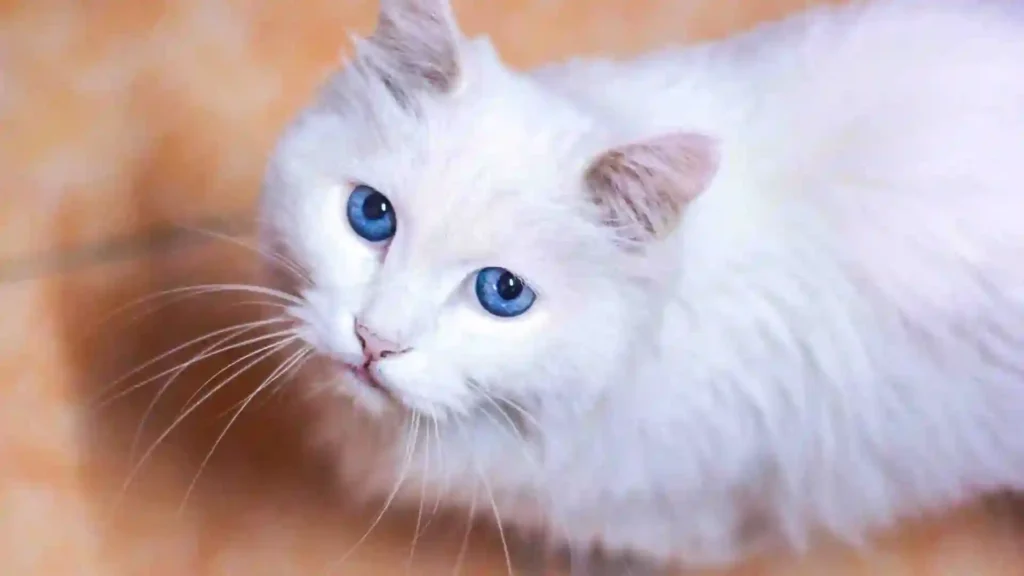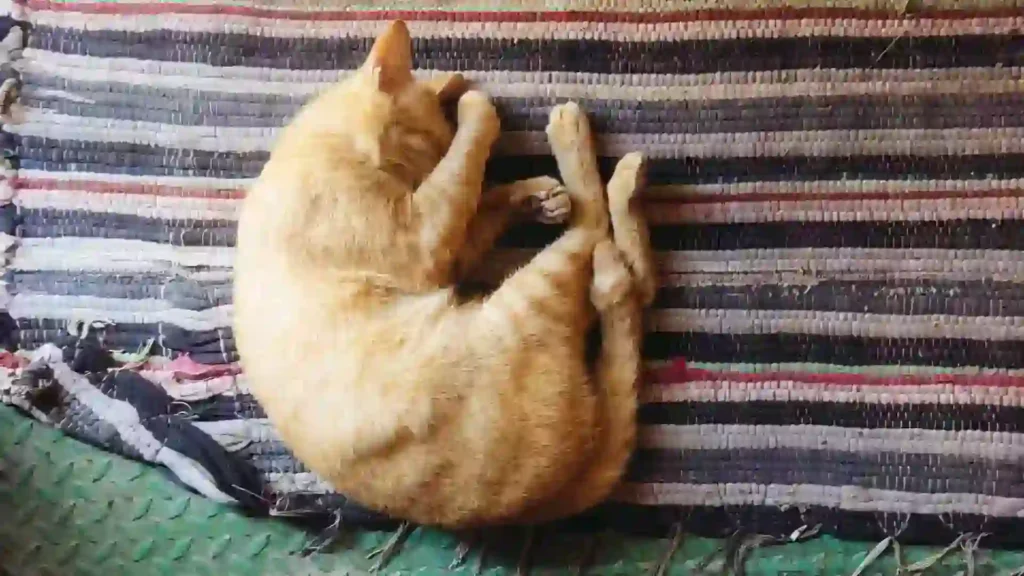Cats naturally shed their fur—it’s just part of the deal when you have a furry friend. But when your cat’s shedding seems out of control, it can definitely raise some eyebrows (and clog a few vacuums!). Don’t worry, though—this is totally manageable once you understand what’s going on.
Shedding can be triggered by various things, from changes in the season to your kitty’s health. Knowing why it’s happening is key to keeping both your cat happy and your home fur-free. In this post, we’ll dive into what’s normal, what’s not, and how you can keep the shedding under control. Plus, I’ll share some super easy tips to help you deal with all that loose fur so you can cuddle your cat without ending up in a fluff storm!
About Feline Nature
Cats are like the ultimate clean freaks! When they’re not munching on snacks, catching some zzz’s, or chasing after toys, they’re busy primping and preening. Yep, they spend a ton of time grooming themselves—and sometimes even their kitty pals. This obsession with cleanliness isn’t just for show; it’s actually their secret trick to staying hidden from predators in the wild.
Now, if you’re a cat parent, you probably know that keeping up with your fur baby’s grooming game can work wonders around the house. Regular brushing? Total game-changer! Not only does it keep your place fur-free (or as close as possible), but it also helps your kitty avoid those dreaded hairballs. Plus, it’s a sweet bonding moment between you and your feline friend. So, grab that brush and get ready for some quality kitty time—it’s a win-win!
Why is my cat shedding so much?
Is cat shedding normal? Totally! Shedding is just part of a cat’s life. Cats shed to get rid of dead hair, making way for that soft, new fur we all love to pet. You can expect shedding, especially if you’ve got a kitty with a thicker or longer coat. But it’s good to know the difference between what’s normal and what might be a bit much. Seasonal changes, like spring and fall, often ramp up the shedding as your cat adjusts its coat.
So, why does a cat shed excessively? If you’re noticing more fur than usual, a few things could be behind it. Stress, a not-so-great diet, or health issues like skin infections and allergies can all lead to extra shedding. Even indoor cats, who aren’t exposed to natural light, might have wonky shedding cycles. Big changes like moving to a new place or introducing another pet can also make your cat shed more.
Are some cat breeds bigger shedders than others? Yep! Long-haired breeds like Maine Coons and Persians tend to shed more than short-haired ones like Siamese and British Shorthairs. But remember, every cat is unique, so shedding can vary even within the same breed.
When should I be concerned about my cat shedding too much?

How do you spot excessive shedding in cats? It’s all about paying attention to your kitty’s grooming habits and the fur they leave behind. If you’re finding extra fluff in their favorite napping spots or noticing bald patches and thinning fur, that’s a red flag. And if the shedding seems to ramp up suddenly or is super intense, it might be more than just regular shedding.
What health issues cause excessive shedding? A few things could be at play. Skin conditions like fungal infections or those pesky parasites (hello, fleas and mites) can lead to hair loss. But it’s not just skin deep—issues like thyroid imbalances or allergies, whether from food or the environment, can also trigger extra shedding. Keeping an eye on your cat’s overall health and behavior is key to catching these problems early.
When should you call the vet? If the shedding doesn’t let up, you notice bald spots, or your cat seems uncomfortable, it’s time to get a professional opinion. A vet can check things out and run tests to figure out what’s going on. The sooner you catch any underlying issues, the quicker you can help your fur baby feel better and prevent more hair loss.
What can I do to reduce my cat’s shedding?
The role of diet in reducing shedding? It’s huge! A balanced diet does wonders for your cat’s skin and coat. High-quality cat food packed with omega-3 and omega-6 fatty acids, vitamins, and minerals can really cut down on shedding. Try adding fish in diet too. They also helps to a great extent. You can also add supplements like fish oil to promote a healthier, shinier coat. Just remember to chat with your vet before making any changes to ensure you’re doing what’s best for your kitty’s specific needs.
Now, let’s talk about grooming techniques to keep that shedding under control. Regular grooming is a game-changer! By brushing your cat, you’re removing loose fur before it ends up all over your couch. Using the right tools, like cat-specific brushes and combs, makes all the difference. And be gentle—stress can actually make shedding worse, so keep grooming sessions relaxed and fun.
Wondering how often you should brush your cat? It depends on their fur type. Long-haired beauties might need daily brushing, while short-haired cats can get by with a few sessions a week. Regular brushing not only helps with shedding but also boosts skin health by distributing natural oils, keeping your cat’s coat looking fabulous. A consistent grooming routine is key to a fur-free home!
How does the season affect cat shedding?
The role of diet in reducing shedding? It’s huge! A balanced diet does wonders for your cat’s skin and coat. High-quality cat food packed with omega-3 and omega-6 fatty acids, vitamins, and minerals can really cut down on shedding. You can also add supplements like fish oil to promote a healthier, shinier coat. Just remember to chat with your vet before making any changes to ensure you’re doing what’s best for your kitty’s specific needs.
Now, let’s talk about grooming techniques to keep that shedding under control. Regular grooming is a game-changer! By brushing your cat, you’re removing loose fur before it ends up all over your couch. Using the right tools, like cat-specific brushes and combs, makes all the difference. And be gentle—stress can actually make shedding worse, so keep grooming sessions relaxed and fun.
Wondering how often you should brush your cat? It depends on their fur type. Long-haired beauties might need daily brushing, while short-haired cats can get by with a few sessions a week. Regular brushing not only helps with shedding but also boosts skin health by distributing natural oils, keeping your cat’s coat looking fabulous. A consistent grooming routine is key to a fur-free home!
What are the best tools and products to help manage shedding in cats?

Looking to tackle that extra fur with the right tools? High-quality brushes and combs are your best friends! Tools like the Furminator, slicker brushes, and deshedding combs work wonders for both long-haired and short-haired kitties. A regular grooming with these can keep your cat’s coat looking fabulous and healthy and prevent loose hair from taking over your home.
For those extra fur days, specialized shampoos can be a game-changer. This shampoos can help you with everything you have been stressing with. These shampoos are packed with goodies that boost skin health and reduce shedding. Anti-shedding treatments and conditioners can also help by strengthening your cat’s fur and cutting down on breakage. Just make sure to pick products that are safe for cats to avoid any skin irritations.
And let’s not forget about supplements! Omega-3 and omega-6 fatty acids are fantastic for improving your cat’s coat and reducing shedding. Basically fish provides this nutrients for your cat. Make sure you add fish to their diet for like once or twice a week. You can find these in chewable tablets or liquid forms that mix right into their food. Biotin and other vitamin-enriched supplements can also give their skin and coat a health boost. Always have a quick chat with your vet to find out what’s best for your kitty’s needs.
Conclusion
So, there you have it—everything you need to know about why your cat might be shedding more than usual and how to keep that fur in check. Shedding is totally normal, but if it seems excessive, it could be a sign of something more going on. From diet and grooming to the right tools and supplements, there are plenty of ways to manage and reduce all that loose fur.
Remember, a balanced diet with the right nutrients is essential for a healthy coat, and regular grooming with high-quality brushes and combs can make a big difference. Don’t forget about specialized shampoos and conditioners that can help reduce shedding and keep your kitty’s coat in tip-top shape. And those supplements? They’re a great way to support your cat’s skin and fur health from the inside out.
If you notice any sudden changes or if your kitty seems uncomfortable, don’t hesitate to reach out to your vet. They can help pinpoint any underlying issues and get your fur baby back to feeling fabulous. With a little care and attention, you’ll have your home looking and feeling fur-free in no time! Happy grooming!










